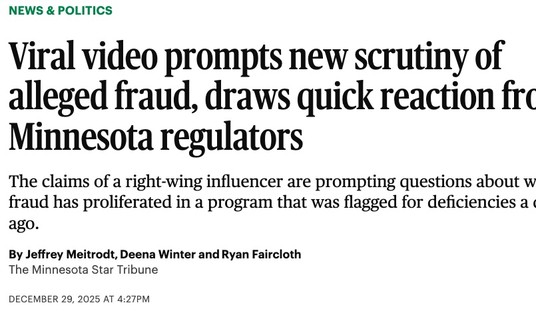It’s from Emerson College’s polling outfit, which somewhat famously caught Marco Rubio’s surge in Iowa just before this year’s caucus and which enjoys a respectable B rating from FiveThirtyEight. Post-convention polls of Ohio have been sort of close, with Clinton typically leading in the four-to-six point range. Post-convention polls of Pennsylvania have … not been close, with Clinton leading by nine points or more in four straight polls — although, notably, there hadn’t been a new poll of PA in three weeks. Realistically Trump needs to win both states to have any chance at an upset in November, so being within striking distance in Ohio in several polls this month meant little unless and until Pennsylvanians decided to play ball too.
If you believe Emerson, they’re ready to play.
Three new Emerson College polls show a tight race shaping up between Democrat Hillary Clinton and Republican Donald Trump in the key Rust Belt States of Ohio, Michigan and Pennsylvania. The two are deadlocked at 43% in Ohio. Clinton leads by three points in Pennsylvania (46% to 43%) and by five in Michigan (45% to 40%). The Libertarian Party’s Gary Johnson garners 7% of the vote in Pennsylvania and Michigan and 10% in Ohio. Green Party candidate Jill Stein receives 2% of the vote in Ohio and Pennsylvania and 3% in Michigan. Each poll consisted of 800 likely voters and had a margin of error of 3.4 percentage points…
There is a significant gender gap, with women breaking for Clinton by 26 points in Michigan (56% to 30%), 15 points in Pennsylvania (53% to 38%) and 13 points in Ohio (51% to 38%). In all three states, 49% of men plan to vote for Trump whereas only 33% of women support him in Ohio and Michigan and 38% in Pennsylvania.
Younger voters favor Clinton over Trump in Ohio (by 50% to 32%) and Pennsylvania (42% to 39%). But in Michigan, where young people helped Bernie Sanders stage an upset over Clinton in the Democratic primary, Trump leads 45% to 33% among those 18-34. Both candidates are receiving about 80% of their party vote. However, Independents are consistently lining up for Trump. In Ohio his edge with Independents is 47% to 30% for Clinton, in Michigan it’s 39% to 38% and in Pennsylvania 43% to 37%.
A 30-point difference among young adults in neighboring states, with Clinton +18 in Ohio and Trump +12 in Michigan among voters age 18-34, is not what you’d expect. In fact, you wouldn’t expect Trump to be leading among young voters anywhere, let alone by double digits. It’s consistently one of his worst demographics, with even Gary Johnson ahead of him within that group in a recent poll of Colorado. And it’s especially surprising to see him far outperforming Clinton among that group in Michigan, which is the most solidly Democratic of the three states surveyed here. Another major surprise: Emerson has Ohio Democratic Senate candidate Ted Strickland at, er, 25 percent in his match-up with Rob Portman, who takes 39 percent of the vote. (Fully 35 percent goes to the combination of “someone else” and “don’t know.”) Strickland does trail Portman badly in most other recent polls of Ohio but Emerson’s the only pollster with a margin in double digits, let alone 14 points. And they’re the only one that has Strickland anywhere near as poor as 25 percent. His lowest number in other polls this month was 39 percent.
There’s something else worth noting in the Pennsylvania crosstabs. Emerson says that it weights its results according to how people voted in 2012. That can be tricky because people don’t report how they voted in the last election accurately. As Nate Cohn recently explained in writing about the LA Times daily tracking poll that typically looks strong for Trump, “Answers [in polls on who you voted for last time] tend to wind up biased toward the winner; often, people who vote for the loser say they ‘can’t remember’ or say they voted for someone else.” As a result, a pollster who’s weighting by 2012 vote should overcompensate by weighting slightly more towards those who say they voted for Obama in 2012 than Obama’s actual margin of victory that year. I.e. in a state like Pennsylvania that Obama won by five points, you’d want your current sample to lean towards Obama by several points greater than that. Instead, Emerson’s sample pretty much exactly reflects the actual Obama/Romney spread from 2012, with a margin of 5.5 points. That might mean that the poll results lean a bit more Republican than they should. This is why some analysts dislike weighting by 2012 vote, because you’re never quite sure how many people are and aren’t fibbing about how they really voted last time.
Hopefully more polls are coming this week, especially of Pennsylvania, so that we can test how tight the race really is. By the way, although Michigan is the biggest stretch for Trump among these three states, the last two polls there have Hillary leading by just five and seven points, respectively. My guess is that if Trump is in a position to pull an upset there, winning it won’t matter much since he’ll already be even better positioned to win the states he really needs to win the presidency, namely, Ohio, Pennsylvania, and Florida. But Michigan is further evidence of a tightening race. It’s the official start of “Trump rebound month”!








Join the conversation as a VIP Member